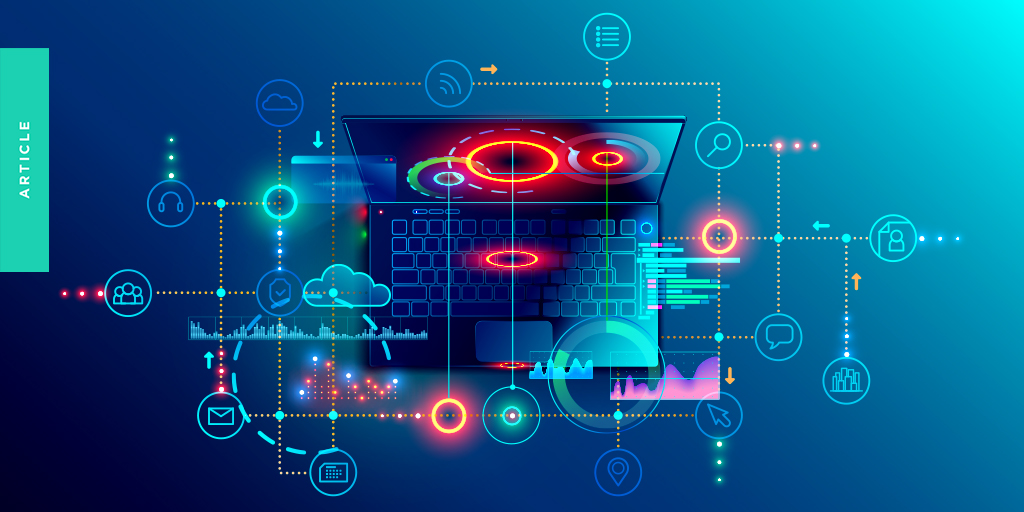Asset protection: securing data in a remote/hybrid world
Remote work is great for work-life balance, but can be bad for security. New networks may be unsecured and data from your business’ IT systems could be compromised during transfer. Without warning, something as innocuous as working in a coffee shop or knocking out a few tasks between flights could be enough to put your entire operation at risk.
It’s no wonder 86% of chief experience officers (CXOs) believe remote employees increase the risk of a data breach. But they’re certainly not the only hack factor.
Here’s how to approach protecting your sensitive company data from multiple angles with the help of hybrid cloud.
What is hybrid cloud + security?
Hybrid cloud combines the benefits of public cloud services with on-premise, private cloud infrastructure to create a powerful computing model for handling complex workloads and modern applications.
Hybrid cloud security protects the data, applications, and infrastructure which are part of the hybrid cloud. That includes data security for information in transit as well as at rest. The design gives businesses more flexibility and increases their agility.
At least 39% of global businesses are already using hybrid cloud, based on results from a 2020 O’Reilly survey.
Protecting your data
Leaders, employees and entire IT systems all share some responsibility in keeping your organizational data safe. To preempt a breach, take the following data security steps:
- Solidify and share your cybersecurity policy. Data security should be everyone’s priority. Unfortunately, that isn’t always the case. The onus is on leaders to continually educate their staff, contractors and other vendors on their role in protecting the company’s information assets. Use a cybersecurity policy to keep everyone informed and accountable.
- Secure your internet connections. The coffee shops and coworking spaces employees often feel most productive aren’t always the most secure. Instead of policing where remote teams can work, encourage them to utilize the company’s virtual private network (VPN) before connecting to public Wi-Fi. Doing so encrypts the data they access and provides a layer of protection from cyberattacks.
- Utilize a password manager. Remembering a series of unique, long passwords for every account is challenging for anyone. Password managers do the heavy lifting by generating strong passwords, storing them securely and logging the user in automatically.
- Update accounts with two-factor authentication (2FA). You’ve probably seen 2FA when you log into your bank accounts. It’s the two-step process that asks you to answer a “secret question” or sends a new, time-sensitive code to one of your devices after you’ve entered your username and password. This additional protection has been shown to block 99.9% of automated attacks.
- Install encryption software on your devices. Lost or stolen devices pose a serious risk to your SMB. Encryption software allows you to restrict access if an unauthorized user attempts to use a device once it’s been reported missing. Encourage your employees to encrypt files and documents they share via email or chat applications, too.
- Include firewalls, antivirus software and anti-malware for everyone. These should be regularly updated for any device that accesses company information. Make sure you have a technical support team in place who can help remote employees with this type of device management.
- Don’t rely on your hybrid cloud’s default settings. To ensure configurations align with your needs, perform regular systems audits. Leverage your well-defined API frameworks to identify bottlenecks and better adhere to data compliance regulations.
- Finalize backup and disaster recovery plans. Hybrid cloud architecture solutions often come standard with data duplication and recovery tools for cloud assets. However you’ll want to create a plan for any on-premise applications or data. Duplicates will ideally be stored in regionally diverse areas and backed up remotely from your source data.
As we’ve seen, data security goes beyond remote workers, even if they are on the front lines. Staying ahead of the growing number of sophisticated attacks means addressing vulnerabilities across multiple fronts. A hybrid-cloud storage solution can help fortify your efforts.
Content created and provided by ONEAFFINITI.












